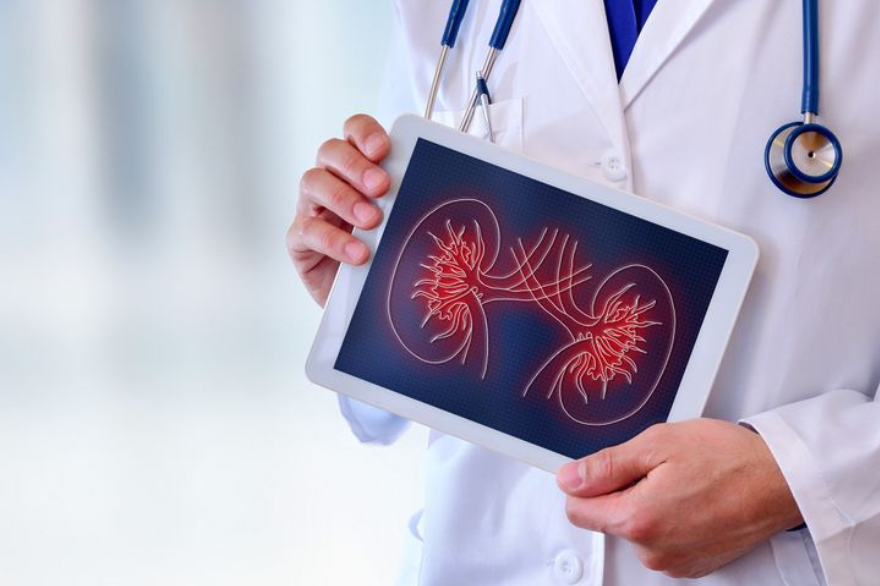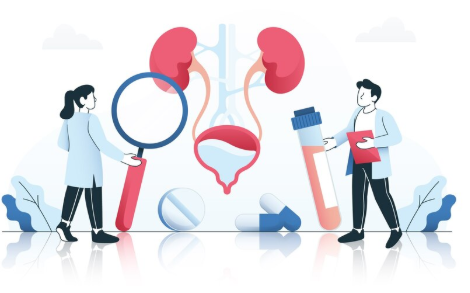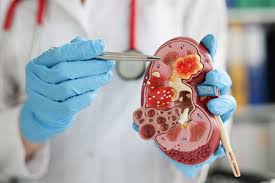Renal & Kidney

The terms Renal and Kidney both relate to the same organ in the body—the kidney—but are used differently depending on context. “Kidney” is the common term used in everyday language to describe the two bean-shaped organs that filter blood, remove waste, and regulate fluid and electrolyte balance. “Renal”, on the other hand, is a medical or scientific term derived from the Latin word renail meaning “of the kidneys.” It is typically used in clinical or anatomical contexts. For example, we say “kidney disease” in general conversation, but “renal failure” or “renal artery” in medical documentation. Both words are correct, but choosing the right one depends on the audience and purpose. For instance, a patient might say they have “kidney stones,” while a doctor might refer to the condition as “renal calculi.” Understanding both terms is important for accurate communication in healthcare, education, and awareness campaigns.
Are renal and kidney the same
The terms renal and kidney refer to the same organ in the human body, but they are used in different contexts. The kidneys are two bean-shaped organs responsible for filtering waste products from the blood, balancing fluids, controlling blood pressure, and producing urine. The word “kidney” is commonly used in everyday language—for example, in phrases like “kidney pain,” “kidney stones,” or “kidney transplant.”
On the other hand, “renal” is a term derived from the Latin word renalis, meaning “related to the kidneys.” It is mostly used in medical or scientific contexts. You’ll see it in terms such as “renal failure,” “renal artery,” or “renal function tests.” While both words describe the same organ, “renal” sounds more clinical or technical, whereas “kidney” is more understandable for the general public.
In summary, yes, renal and kidney refer to the same organ, but the choice between them depends on the context. Medical professionals use “renal” in formal communication, while “kidney” is preferred in everyday conversations and public health education.

What is renal kidney cyst
A renal kidney cyst (often just called a renal cyst or kidney cyst) is a fluid-filled sac that forms on or in the kidneys. These are quite common, especially as people age.
There are two main types:
- Simple Renal Cysts:
- These are the most common type.
- They are typically round or oval, with thin, smooth walls, and filled with clear, watery fluid.
- Simple cysts are almost always benign (non-cancerous) and usually don’t cause any symptoms or problems with kidney function.
- They are often discovered incidentally during imaging tests (like ultrasound, CT scan, or MRI) done for other reasons.
- In most cases, simple cysts don’t require any treatment unless they grow very large and cause symptoms.
- Complex Renal Cysts:
- These cysts have more irregular features, such as thicker walls, internal divisions calcifications, or solid components.
- Complex cysts have a higher chance of being or becoming cancerous compared to simple cysts.
- They are classified using the Bosniak classification system (ranging from I to IV), which helps doctors assess the likelihood of malignancy and determine the appropriate management (monitoring or surgical intervention).
What causes them?
The exact cause of simple renal cysts isn’t fully understood. One theory suggests they form when tiny tubules in the kidney become blocked, swell, and fill with fluid. Another idea is that weakened areas in the tubules form pouches that fill with fluid.
Symptoms:
Most simple renal cysts don’t cause any symptoms. If they do, it’s usually because they’ve grown large enough to press on other organs or structures. Symptoms can include:
- Dull pain or tenderness in the back, side (flank), or upper abdomen.
- Fever (if the cyst becomes infected).
- Changes in urinary habits.
- Blood in the urine (hematuria).
- In rare cases, they can block urine flow or impair kidney function.
When is treatment needed?
- Simple, asymptomatic cysts usually don’t require any treatment. Doctors might recommend periodic imaging to monitor them for changes.
- Symptomatic cysts (those causing pain, infection, or affecting kidney function) may require treatment. Options include:
- Aspiration and sclerotherapy: A needle is used to drain the fluid from the cyst, and then a solution (like alcohol) is injected to make the walls scar down and prevent it from refilling.
- Laparoscopic surgery (cyst decortication): For larger or more problematic cysts, a surgeon may remove part of the cyst wall using minimally invasive techniques.
- Complex cysts, especially those with higher Bosniak classifications, often require closer monitoring or surgical removal to rule out or treat cancer.
It’s important to differentiate simple renal cysts from Polycystic Kidney Disease (PKD). PKD is a genetic disorder that causes numerous cysts to grow in the kidneys, leading to kidney enlargement and potential kidney failure. While both involve cysts, simple renal cysts are usually isolated and not associated with PKD.

The Future of Kidney Health
The future of kidney health in 2025 and beyond is poised for significant advancements, with a strong emphasis on prevention, early detection, and personalized care. The global burden of kidney disease continues to rise, driven by increasing rates of diabetes, hypertension, and obesity. Therefore, proactive strategies are more critical than ever.
Here’s a look at key preventive strategies and emerging trends:
I. Core Preventive Strategies (Evergreen & Enhanced)
The foundation of kidney health prevention remains rooted in managing risk factors and promoting healthy lifestyles. These strategies will continue to be paramount:
- Aggressive Management of Underlying Conditions:
- Diabetes: Strict blood glucose control is crucial to prevent or slow diabetic nephropathy. This includes dietary management, regular exercise, and adherence to prescribed medications.
- Hypertension (High Blood Pressure): Maintaining blood pressure within target ranges (e.g., below 140/90 mmHg, or even lower for those with CKD) is critical. This often involves lifestyle changes (low-salt diet, exercise, weight management) and appropriate medication, particularly ACE inhibitors and ARBs, which have a protective effect on the kidneys.
- Cardiovascular Disease: Given the strong link between heart and kidney health, managing cholesterol and other cardiovascular risk factors is essential.
- Obesity: Weight management through healthy diet and regular physical activity is a cornerstone of prevention, as obesity is a significant risk factor for kidney disease.
- Healthy Lifestyle Promotion:
- Balanced, Kidney-Friendly Diet: Emphasizing fruits, vegetables, whole grains, lean proteins, and low-fat dairy. Reducing intake of processed foods, red meat, added sugars, and excessive sodium is key. Dietary approaches like DASH (Dietary Approaches to Stop Hypertension) are highly recommended.
- Regular Physical Activity: Aiming for at least 30 minutes of moderate-intensity activity most days of the week.
- Maintaining a Healthy Weight: Through balanced nutrition and exercise.
- Smoking Cessation: Smoking significantly increases the risk of kidney damage and its progression.
- Limited Alcohol Intake: Excessive alcohol can raise blood pressure and contribute to weight gain.
- Adequate Sleep: Aim for 7-8 hours of quality sleep per night.
- Stress Management: Incorporating stress-reducing activities like meditation, yoga, or tai chi.
- Cautious Medication Use:
- NSAIDs (Non-Steroidal Anti-Inflammatory Drugs): Over-the-counter pain relievers like ibuprofen and naproxen can harm the kidneys if used regularly or in excess. Patients, especially those with existing kidney issues, should use them cautiously and as directed.
- Awareness of Nephrotoxic Drugs: Healthcare providers will continue to emphasize careful prescription and monitoring of medications known to affect kidney function.
II. Advances in Early Detection and Risk Stratification
The future will see a greater emphasis on identifying kidney disease at its earliest, often asymptomatic, stages:
- Enhanced Screening for High-Risk Populations:
- Routine Blood and Urine Tests: Continued importance of eGFR (estimated Glomerular Filtration Rate) from creatinine blood tests and UACR (Urine Albumin-to-Creatinine Ratio) to detect protein in the urine (albuminuria). These simple, cost-effective tests will remain the primary tools.
- Integrated Screening: Integrating CKD testing into routine care for individuals with diabetes, hypertension, cardiovascular disease, obesity, or a family history of kidney disease. This can happen in primary care settings, or even community interventions.
- Novel Biomarkers:
- Beyond traditional creatinine and albumin, research continues to identify more sensitive and specific biomarkers for early kidney injury and progression. Examples include:
- Cystatin C: A blood protein that can provide a more accurate GFR estimate than creatinine in certain populations.
- Neutrophil gelatinase-associated lipocalin (NGAL) and Kidney Injury Molecule-1 (KIM-1): These markers show promise in detecting acute kidney injury and early CKD before significant changes in eGFR occur.
- Proteomics and Metabolomics: Analyzing patterns of proteins and metabolites in urine or blood to identify molecular signatures of kidney disease, even at very early stages.
- RNA and DNA biomarkers: Investigating the potential of microRNAs (miRNA) and small RNAs in urinary exosomes as highly specific indicators of kidney function and damage.
- Beyond traditional creatinine and albumin, research continues to identify more sensitive and specific biomarkers for early kidney injury and progression. Examples include:
- Artificial Intelligence (AI) and Machine Learning (ML):
- AI and ML will play an increasingly vital role in analyzing vast datasets from electronic health records to:
- Predict CKD onset and progression: Identifying individuals at high risk even before traditional symptoms appear.
- Stratify patients: Grouping patients based on their risk of rapid progression to enable personalized interventions.
- Assist in clinical decision-making: Guiding healthcare providers in optimal management strategies.
- Accelerate biomarker discovery: Helping to pinpoint new markers for early detection.
- AI and ML will play an increasingly vital role in analyzing vast datasets from electronic health records to:
- Imaging Advancements:
- Non-invasive imaging techniques like advanced MRI (e.g., diffusion-weighted MRI, blood oxygenation level–dependent MRI) and ultrasound are being explored to assess nephron number, kidney function, and fibrosis early on, providing detailed morphological and functional information.
- III. Emerging Trends in Treatment and Management
While prevention is key, advancements in treatment will also contribute to better kidney health outcomes:
- Personalized Medicine (Precision Nephrology):
- Leveraging genomics, proteomics, and metabolomics to understand an individual’s unique molecular and genetic profile. This will allow for tailored treatment plans, predicting who might benefit most from specific therapies and optimizing drug dosages.
- Targeting specific pathways involved in kidney disease progression with novel drug molecules.
- Gene and Cell Therapies:
- Emerging as promising avenues, gene therapy research aims to inhibit the expression of genes involved in CKD progression, potentially delaying or preventing its onset.
- Cell-based regenerative therapies are being explored with the hope of repairing kidney damage and restoring renal function.
- Telehealth and Connected Health:
- The expansion of telenephrology (remote consultations, monitoring) will make kidney care more accessible, particularly for patients in remote areas or those with mobility challenges.
- Wearable devices and connected health apps will enable real-time, remote monitoring of patient parameters, allowing for proactive adjustments to care.
- Innovative Dialysis and Transplantation:
- Home Dialysis: Continued development of user-friendly home dialysis machines will increase convenience and improve quality of life for patients.
- Wearable Artificial Kidneys: Experimental devices are in development to provide continuous dialysis, significantly reducing hospital visits.
- Robotic-Assisted Surgeries: For kidney transplants and other procedures, robotic technology enhances precision, leading to faster recovery times.
- 3D Bioprinting: Research into 3D-printed kidneys and bio-fabricated tissues holds futuristic promise for addressing organ shortages and providing personalized replacement options.
In 2025 and beyond, the vision for kidney health is one where a holistic approach combining robust lifestyle interventions, cutting-edge early detection technologies, and increasingly personalized and regenerative treatments will transform the landscape of kidney disease, shifting the focus from managing advanced illness to preventing its onset and progression for a healthier global population.


